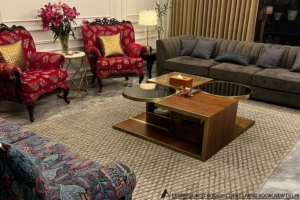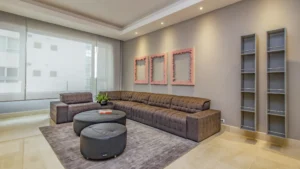A rug’s business involves more than just making beautiful, top-quality pieces. it’s about balancing creativity with business-savvy strategies. The management of inventory and prices play key parts in ensuring that you are profitable while also ensuring seamless flow of work.
No matter if you’re a veteran rug retailer or are just beginning out This complete guide will help learn the fundamental steps needed to create a balanced pricing strategy and efficiently manage your inventory. At the end of this guide you’ll have the ability to make informed decisions that are in line with your brand’s values and will help you grow your business over time.
Why Pricing and Inventory Are the Foundations of a Rug Business
Inventory management and pricing might not be to be as appealing as arranging carpets However, these two elements make it possible for you to remain in the game and be successful.
- Price: Without a solid pricing structure that is well-established, you could undercharge customers and lose money, or overcharge and turn off customers. A well-planned pricing strategy is not just aligned with your brand’s image but will also help you achieve profitability while providing benefits to customers.
- Inventory Incorrect management here could result in deadstock and overstocking or selling out of bestsellers in critical times. Effective inventory systems cut down on the amount of waste, reduce costs, and guarantee customer satisfaction.
This guide will assist you in overcoming these obstacles and remain committed to your original and business objectives.
Understand Your Costs Thoroughly
Before setting a price, you must have an knowledge of the costs. Here’s a breakdown of major expenses that the rug industry.
Key Costs to Consider:
- Raw materials: Wool, silk, cotton dyes, as well as other components significantly affect the cost of production. Keep track of prices in the market, since fluctuations could affect the total cost.
- The cost of labor and artisan fees If your rugs are hand-woven in Bhadohi or made by hand, the artisan’s skill is a right to be fairly compensated.
- Manufacturing Overheads Add electricity and maintenance of equipment, as well as the cost of workspace rental in your total.
- Packaging as well as branding: Don’t overlook the importance of sturdy and well-branded packaging to improve the experience for customers.
- shipping and logistics Consider shipping and logistics charges for international and domestic deliveries and customs charges for international markets.
- Hidden costs: Returns, tax, exchange rates and other unforeseen damage can increase. Making sure you have a reserve for this helps to avoid financial shocks.
Once you have a clear understanding of the costs you incur, you can create a pricing plan that will ensure profit.
Choose a Pricing Model That Fits Your Brand
Pricing doesn’t have to be one-size-fits-all. Your approach must reflect your brand’s image and goals for your business.
1. Cost-Plus Pricing:
This is simple and perfect for custom or handmade rugs.
- Include an unassailable profit margin to your total expenses.
- Example: If the production of a rug costs $100, and you are able to add 50 percent margin and the final price is be $150.
- Pro It is easy to figure out.
- Pro: Doesn’t factor into the perception of value by customers.
2. Value-Based Pricing:
Charges are according to the value that your product can provide to the customers. Perfect for unique, artisan-made rug designs that are tied to stories of the culture.
- Example A rug’s story resonates strongly with the urban crowd who are willing to spend more money for exclusivity, then set more expensive prices.
- Pro: High profit potential.
- Con: Requires deep market research.
3. Competitive Pricing:
Set your prices in relation to your competitors on the market.
- Example: If other brands price similar rug for $300 or more, then you could price yours slightly higher or lower depending on your company’s value offering.
- Pro It helps to break into the market that is crowded.
- Pro: Risk of lower margins.
Prices for Wholesale in comparison to. Wholesale
If you are selling wholesale, make sure the margin is lower however it will be able to cover large orders. Retail prices however are able to afford a larger margin, particularly when it comes to exclusive items or those that are in high demand.
Factor in Profit Margins and Business Goals
Profit margins form the basis of long-term achievement. Aim for:
- Rugs made by hand: 50-60% profit margin
- Rugs made in bulk: 20-30% profit margin
Tips to Build Profit Margins:
- For rugs that are unique, you can make sure that the margins of profit are higher to show the exclusivity.
- Margins that can be adjusted for promotions as well as seasonal pricing help keep your business moving.
- You should make sure that you have room to reinvest (e.g. upgrading equipment, educating artisans or extending stocks).
Monitor and Adjust Prices Over Time
Your pricing strategy needs to be able to change in response to current market conditions and operational data.
When to Adjust Prices:
- Price Increase: Due to costs for materials or the complexity of design.
- Lower Price: to clear out slow-moving stock or during sales times.
Utilize feedback from customers and production trends to justify your changes to ensure that your customers are informed.
Inventory Management Basics
Without a solid inventory management system even the most impressive collection of carpets can be a source of difficulties with logistics.
Common Challenges:
- Deadstock Stock that’s not being sold and doesn’t get sold.
- Over-ordering It binds storage space and capital.
- Stockouts Revenue loss and dissatisfied customers.
The most important thing is to choose the method of tracking inventory that works for you regardless of whether it’s a basic spreadsheet or a more sophisticated management program such as Shopify and Cin7.
Choosing the Right Inventory System
Production Models:
- Made-to-Order Only produce when customer orders have been received. Benefits include less risk of inventory, but lead times could be longer.
- Ready-to-Ship: Keep popular designs in stock for quicker delivery. This requires accurate forecasting in order to avoid the risk of overstock.
Dropshipping vs. In-House Inventory:
- Opt for an in-house option If quality control is important to you.
- Dropshipping is a great option if reducing expenses is the primary goal.
Forecasting Demand Accurately
Utilize your sales data along with seasonality, the behavior of your customers to determine the demand. For instance, lighter-colored textures tend to be more popular during summer, whereas vibrant designs are popular during holiday gifts.
Get ready for the launch of collections by placing pre-orders or waitlists in order to monitor interest and manage inventory more efficiently.
Integrate Pricing and Inventory Systems
Both functions have to function in a seamless manner. Price tiers affect stock levels, and the data on bestsellers can influence the future pricing strategies. For instance:
- Offer bundle pricing on slow-moving products to eliminate the inventory.
- Increase stock of items with high margins that are attracting constant demand.
Maintain Long-term Success through Strategic Operations
Finding a balance between creativity and good inventory and pricing methods isn’t an easy task but it’s the basis of a successful rug business.
- Make sure that financial forecasts are constantly changing by adjusting to market trends.
- Check your inventory frequently to eliminate any inefficiencies.
- Try small-scale price changes before distributing them widely.
If you can align your artistic talents with the latest business practices based on data and processes, you’ll not only make amazing spaces for your clients but also establish a strong and expandable business.
Do you want to enhance your inventory and pricing processes to the next level? Explore our tools and templates specifically designed for rug-related businesses such as yours.
Read More:
- How to Start a Rugs and Carpet Business?
- How to Create a Rug Business Plan in India (2025)
- How to Design and Develop Your Own Rug Collection for Interior Styling
- How to Source the Right Rugs and Carpets for Your Interior Projects
- How to Set Up Rug Production and Manufacturing for Your Interior Brand
- How to Plan Your Rug Collection Around Seasonal Interior Trends?
- How to Build an Online Store for Your Rug and Carpet Business
- How to Market Your Rug and Carpet Business Online?
- How to Use AI to Predict Interior Design Trends for Your Rug Collection?





